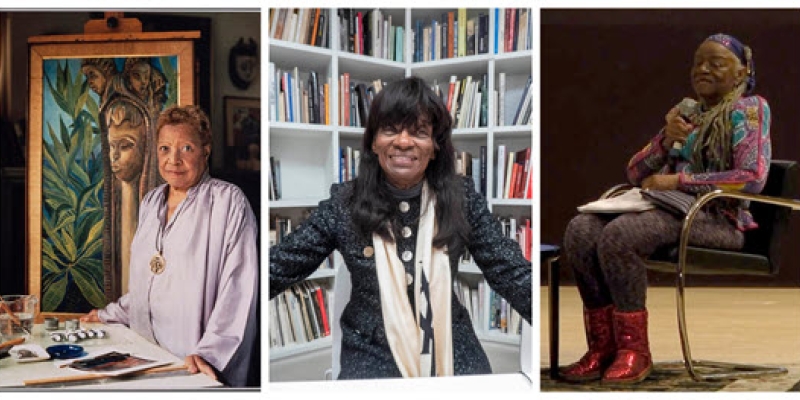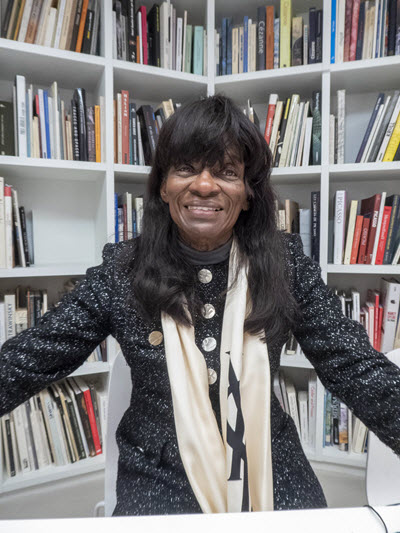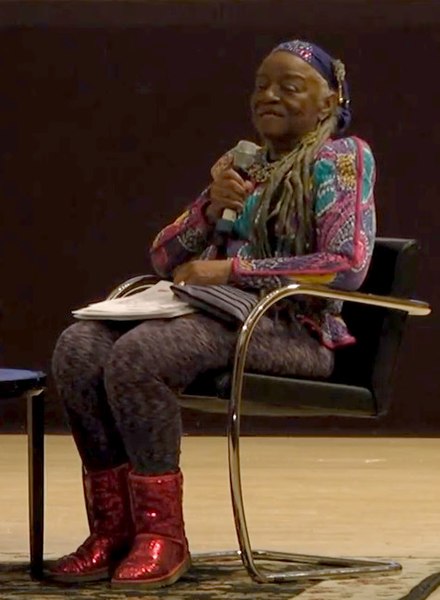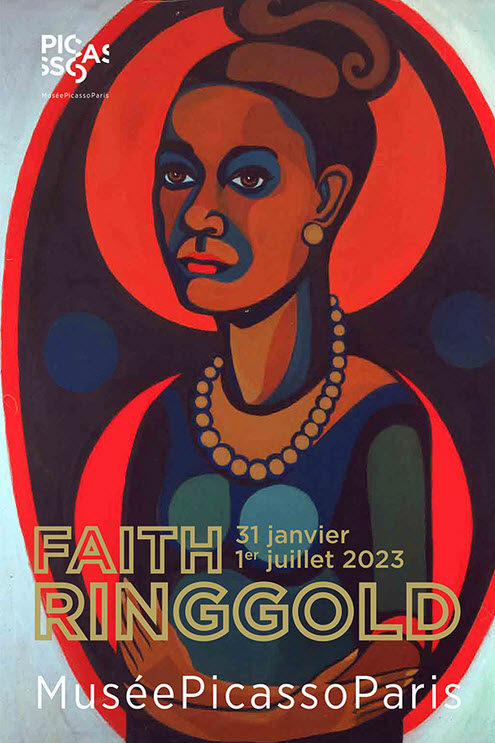
Thursday, November 10th, 2022
African-American Women Artists in Paris after WWII
Cover image: Triptych of Loïs Mailou Jones, Barbara Chase-Riboud, and Faith Ringgold
Collage © Entrée to Black Paris
In the first half of the 20th century, Paris was the world capital of the arts. After World War II, though New York began to replace Paris in this role, thousands of artists continued to move to the French capital to find and express their creative Muse.
Paris and Nowhere Else, the art exhibition currently on display at the Musée de l'Immigration at the Palais de la Porte Dorée in Paris' 12th arrondissement, examines questions of immigration through the work of 24 artists who moved to the City of Light between 1945 and 1972.
Curator Jean-Paul Ameline selected artists from Europe, North America (including the Caribbean), South America, Asia, and Africa to mount this show. Of them, two are black (Wifredo Lam from Cuba and Iba N'Diaye from Senegal) and six are women. The U.S. is represented by a single artist, painter Joan Mitchell.
Though I plan to visit this exhibition, I am disappointed that no African Americans - male or female - were chosen for it, despite the numerous African-American artists who called Paris for months to years after WWII. And I am intrigued that the only American selected for the show was a woman.
This makes me think of the few well-known female African-American artists who moved to or spent significant time in Paris during the post-WWII era: Loïs Mailou Jones, Barbara Chase-Riboud, and Faith Ringgold.
Loïs Mailou Jones
_Black Women oral history project_Schlesinger Library-RIAS-Harvard U_no copyright restrictions.jpg) Loïs Mailou Jones
Loïs Mailou Jones
Black Women Oral History Project - Judith Sedgwick
Schlesinger Library, RIAS, Harvard University
No known copyright restrictions
After studying at the Académie Julian in 1937-38, Loïs Mailou Jones returned to France frequently between 1945 and 1953, when she and her friend and colleague Céline Tabary traveled together. Jones and her husband, Louis Vergniaud Pierre-Noël, also traveled frequently to France after they married in 1953.
ETBP featured Jones in the following article:
A detailed article about African-American artists in Paris provides images of multiple paintings that she created during her numerous trips to France after the war:
The "Other" Lost Generation of Black American Artists in Paris
Barbara Chase-Riboud
 Barbara Chase-Riboud at the Institut Giacometti
Barbara Chase-Riboud at the Institut Giacometti
© Entrée to Black Paris
Barbara Chase-Riboud moved to Paris in 1960. Two of her works were acquired by France's Centre National des Arts Plastiques in 1972 and 1984.* In 1974, she had a solo exhibition at the Musée d’Art Moderne de la Ville de Paris.
ETBP has featured Chase-Riboud twice in the past 13 months. Read our articles below:
Entrée to Black Paris Celebrates Barbara Chase-Riboud
Barbara Chase-Riboud at the Institut Giacometti
The Serpentine Gallery in London is currently showing her work in an exhibition called Infinite Folds.
Faith Ringgold
 Faith Ringgold
Faith Ringgold
Brooklyn Museum
CC-BY 3.0
Faith Ringgold first visited Paris in 1961, with her mother and her two daughters accompanying her. Thirty years later, she created Part I of her famous French Collection series of story quilts, which she began during a three-month internship on the French Riviera in 1990 thanks to funding from the University of California, San Diego and the National Endowment for the Arts. After completing Part I of the series, she traveled to Paris and stayed for two months in 1992.
In February 1994, Ringgold participated in "A Visual Arts Encounter, African-Americans in Europe," a event organized by the Sorbonne, Harvard, and four additional U.S. and European universities at the Luxembourg Palace to explore the relationship between African-American artists and Europe.
The Musée Picasso is hosting a solo exhibition of her work from January 31 through July 1, 2023.

All three artists had work featured in the The Color Line exhibition at the Musée du Quai Branly - Jacques Chirac in 2016.
*To learn more about African-American women artists in French public collections, click HERE.

 Our Walk: Black History in and around the Luxembourg Garden - Click here to book!
Our Walk: Black History in and around the Luxembourg Garden - Click here to book!